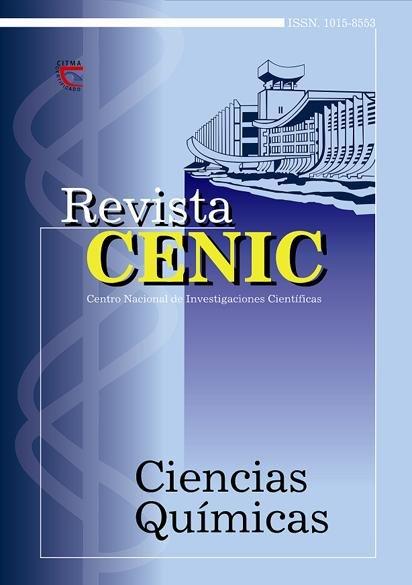Substitution of Al3+ by Fe3+ in the AlPO4-5 structure by computer simulation
Abstract
In this paper the substitution of Al3+ by Fe3+ in the AlPO4-5 framework was studied. The calculations were performed using lattice energy minimization techniques. The program employed in the simulation was GULP, which works starting from interatomic potentials and the formal charge shell model. The stability of the lattice was studied for several configurations of a Fe3+ for asymmetric unit cell of the AlPO4-5, determining the most probable sites of the Fe3+ in the structure. For each configuration the fundamental parameters
of the unit cell were reported. The calculation was carried out considering that the lattice keeps the original symmetry and subsequently without this restriction, with the objective of determining the influence of the symmetry in the total energy of the lattice. Starting from the outputs of the optimization the group of symmetry of the optimized structures was obtained (group Ccc2), being this symmetry group one of those that were argued like probable for the structure of the AlPO4-5. Finally, the results of these simulations show that the incorporation of Fe 3+ in the tetrahedric sites could occur. Nevertheless, in this substitution the structure of the AlPO4-5 is destabilized and appreciable changes in the T-O distances and in the T-O-T angles occur. Concerning T-O distances it was observed that the Fe incorporation enlarge the T-O distance by about 0.3 Å, which can be considered as a strong distortion in the framework.

Downloads
Published
How to Cite
Issue
Section
License

This work is licensed under a Creative Commons Attribution-NonCommercial-ShareAlike 4.0 International License.
Los autores que publican en esta revista están de acuerdo con los siguientes términos:
Los autores conservan los derechos de autor y garantizan a la revista el derecho de ser la primera publicación del trabajo al igual que licenciado bajo una Creative Commons Atribución-NoComercial-CompartirIgual 4.0 que permite a otros compartir el trabajo con un reconocimiento de la autoría del trabajo y la publicación inicial en esta revista.
Los autores pueden establecer por separado acuerdos adicionales para la distribución no exclusiva de la versión de la obra publicada en la revista (por ejemplo, situarlo en un repositorio institucional o publicarlo en un libro), con un reconocimiento de su publicación inicial en esta revista.
Se permite y se anima a los autores a difundir sus trabajos electrónicamente (por ejemplo, en repositorios institucionales o en su propio sitio web) antes y durante el proceso de envío, ya que puede dar lugar a intercambios productivos, así como a una citación más temprana y mayor de los trabajos publicados (Véase The Effect of Open Access) (en inglés).













